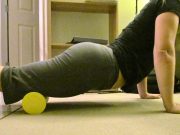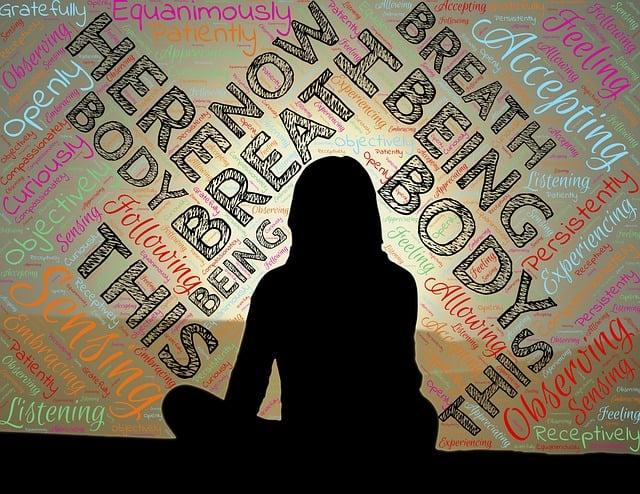In the relentless pace of modern life, stress often feels like an unwelcome but inevitable companion. Whether it’s the pressure of work deadlines, the demands of family life, or the constant barrage of information from our digital devices, the weight of stress can be overwhelming. Yet, amidst this chaos, a simple, accessible, and profoundly effective tool lies right under our noses: our breath. Mindful breathing, an ancient practice rooted in various cultural traditions, offers a pathway to tranquility and balance. By harnessing the power of our breath, we can create a sanctuary of calm within ourselves, reducing stress and enhancing our overall well-being. This article will guide you through the transformative practice of mindful breathing, offering insights and techniques to help you navigate life’s challenges with grace and resilience.
Understanding the Science Behind Mindful Breathing
At its core, mindful breathing is about bringing awareness to the breath, a process that is both simple and profound. When we focus on our breathing, we activate the parasympathetic nervous system, which is responsible for the body’s rest and digest functions. This activation counteracts the stress-induced fight or flight response triggered by the sympathetic nervous system. By consciously slowing down our breathing, we can reduce heart rate, lower blood pressure, and decrease levels of cortisol, the stress hormone.
Research has shown that mindful breathing can lead to a range of benefits, such as:
- Enhanced focus and clarity: By calming the mind, we can improve our concentration and decision-making abilities.
- Emotional regulation: Mindful breathing helps in recognizing and managing emotions, leading to better stress management.
- Improved physical health: Regular practice can lead to better sleep, digestion, and overall well-being.
| Aspect | Impact |
|---|---|
| Heart Rate | Decreases |
| Blood Pressure | Reduces |
| Cortisol Levels | Lowers |
By understanding and practicing mindful breathing, you can cultivate a sense of calm and resilience in the face of daily stressors. It’s a skill that not only supports mental health but also fosters a deeper connection with your own body and mind.

Practical Techniques to Incorporate Mindful Breathing into Daily Life
Integrating mindful breathing into your daily routine can be a transformative experience. Here are some practical techniques to seamlessly weave this practice into the fabric of your everyday life:
- Morning Rituals: Start your day with a few minutes of deep breathing before getting out of bed. Focus on the rise and fall of your chest, setting a calm and intentional tone for the day.
- Mindful Breaks: During work or study sessions, take short breaks to practice breathing exercises. Even a minute of focused breathing can refresh your mind and improve concentration.
- Breathing Cues: Associate mindful breathing with specific actions, such as waiting for your coffee to brew or during your commute. These cues serve as gentle reminders to pause and breathe.
- Pre-Sleep Routine: Incorporate breathing exercises into your bedtime routine to relax your body and mind, preparing you for restful sleep.
| Technique | Benefits |
|---|---|
| Morning Rituals | Sets a peaceful tone for the day |
| Mindful Breaks | Enhances focus and reduces stress |
| Breathing Cues | Creates consistent practice reminders |
| Pre-Sleep Routine | Promotes relaxation and better sleep |
By incorporating these techniques, you can cultivate a habit of mindful breathing that fits effortlessly into your lifestyle, offering moments of tranquility and stress reduction throughout your day.

How Mindful Breathing Transforms Your Stress Response
Mindful breathing is a powerful tool that can fundamentally alter how we respond to stress. When we engage in deliberate breathing exercises, we activate the parasympathetic nervous system, which counteracts the body’s fight-or-flight response. This shift not only helps in calming the mind but also promotes a state of relaxation and well-being. By simply focusing on your breath, you can cultivate a sense of presence and stability, allowing stress to dissipate naturally.
- Immediate Calm: Redirects attention from stressors, promoting relaxation.
- Increased Awareness: Enhances mindfulness, helping identify stress triggers.
- Emotional Balance: Regulates emotions, reducing reactivity to stress.
Consider the following simple technique to incorporate into your daily routine:
| Step | Action |
|---|---|
| 1 | Find a quiet, comfortable place to sit. |
| 2 | Close your eyes and take a deep breath in through your nose. |
| 3 | Hold your breath for a count of four. |
| 4 | Exhale slowly through your mouth, counting to six. |
| 5 | Repeat for 5-10 minutes daily. |
Integrating mindful breathing into your life can transform not only how you handle stress but also enhance your overall mental clarity and emotional resilience. Make it a daily practice, and watch as your stress response becomes more adaptive and balanced.

Empowering Yourself with Mindful Breathing Practices
Incorporating mindful breathing into your daily routine can serve as a powerful tool to combat stress and foster a sense of inner peace. Mindful breathing involves focusing on the breath in a conscious manner, allowing you to tune into the present moment. This simple yet effective practice helps in breaking the cycle of stress by calming the mind and relaxing the body.
- Find a quiet space: Choose a comfortable, peaceful spot where you won’t be disturbed.
- Focus on your breath: Pay attention to the natural rhythm of your breathing, noticing each inhale and exhale.
- Stay present: When your mind wanders, gently bring your focus back to your breath without judgment.
To better understand the impact of mindful breathing on your stress levels, consider keeping a simple log:
| Date | Duration (Minutes) | Stress Level (1-10) |
|---|---|---|
| 2023-10-01 | 5 | 7 |
| 2023-10-02 | 10 | 5 |
| 2023-10-03 | 15 | 3 |








































